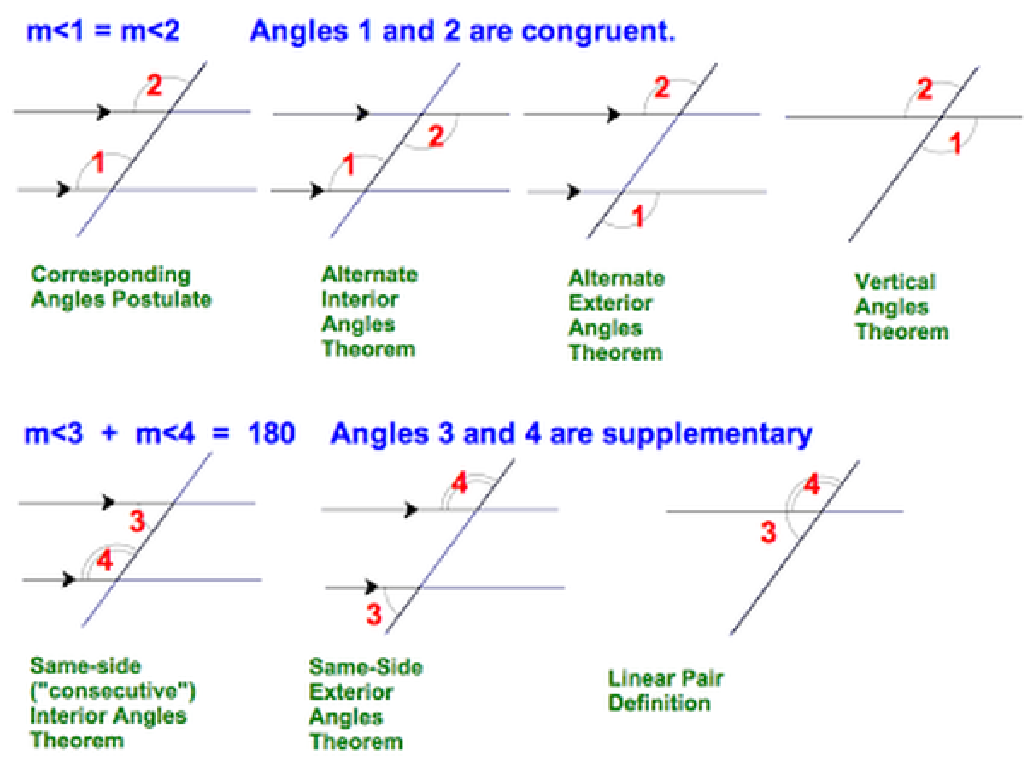Beginnings - 600 Bce
Subject: Arts and humanities
Grade: High school
Topic: World History
Please LOG IN to download the presentation. Access is available to registered users only.
View More Content
Exploring Ancient Civilizations: Dawn of Human History
– Dawn of human history demystified
– Explore the earliest human societies and their development.
– Timeframe: Beginnings to 600 BCE
– A period marking the start of recorded history and lasting until the fall of the Neo-Babylonian Empire.
– Civilizations that shaped our world
– Mesopotamia, Ancient Egypt, Indus Valley, and Shang Dynasty in China.
– Understanding their legacies
– Their contributions to writing, law, and society still impact us today.
|
This slide introduces students to the earliest period of human history, providing a foundation for understanding the development of ancient civilizations. It’s crucial to convey the significance of this timeframe as it encompasses the beginning of recorded history and includes the rise and fall of some of the first complex societies on Earth. Highlight major civilizations such as Mesopotamia, Ancient Egypt, the Indus Valley, and the Shang Dynasty, emphasizing their contributions to the development of writing systems, legal codes, and societal structures. Discuss how these civilizations laid the groundwork for the modern world, influencing contemporary culture, technology, and governance. Encourage students to consider the lasting legacies of these ancient societies and to reflect on how history is a continuum that shapes the present and future.
The Cradle of Civilization: Mesopotamia
– Mesopotamia’s geography
– Known as the land between the Tigris and Euphrates rivers.
– Sumerians: Urban pioneers
– Established some of the first cities in history like Uruk and Ur.
– Cuneiform: Writing revolution
– One of the earliest writing systems, used for record-keeping and storytelling.
– Impact on modern society
|
This slide introduces students to Mesopotamia, often referred to as the Cradle of Civilization due to its significant contributions to human culture and progress. Highlight the importance of its geographic location between the Tigris and Euphrates rivers, which fostered the growth of the first cities and complex societies. Discuss the Sumerians, who were among the first to transition from nomadic to urban life. Emphasize the invention of cuneiform, which marked the beginning of recorded history and had profound implications for communication, governance, and trade. Lastly, connect these ancient innovations to their lasting impact on modern society, including urban planning, written language, and legal systems. Encourage students to consider how these early developments continue to influence our world today.
Ancient Egypt: Cradle of Civilization
– The Nile River: Lifeline of Egypt
– The Nile’s floods enabled agriculture, sustaining Egyptian civilization.
– Pharaohs and the Afterlife
– Pharaohs were considered gods, with elaborate tombs to secure their afterlife.
– The Mysteries of Mummification
– Mummification preserved bodies for the afterlife, involving complex rituals.
– Deciphering Hieroglyphics
– Hieroglyphics were the written language, used in sacred texts and decrees.
|
This slide introduces key aspects of Ancient Egyptian civilization, emphasizing the Nile River’s crucial role in supporting life and agriculture, which allowed the civilization to thrive. It also explores the religious beliefs of the Egyptians, particularly the pharaohs’ divine status and their elaborate burial practices, including pyramids and mummification, to ensure their journey to the afterlife. Additionally, the slide covers the significance of hieroglyphics as Egypt’s sacred script, which was essential for recording history and religious texts. Encourage students to consider the impact of geography on civilization development and the lasting legacy of Ancient Egyptian culture and technology.
Exploring the Indus Valley Civilization
– Harappa and Mohenjo-Daro urban planning
– Advanced city planning with grid patterns, drainage systems
– Undeciphered script and trade
– Trade with Mesopotamia, use of seals for transactions
– Theories behind civilization’s decline
– Climate change, invasions, and resource depletion hypotheses
– Impact of the Indus Valley legacy
|
The Indus Valley Civilization was one of the world’s earliest urban cultures, renowned for its advanced city planning, as seen in Harappa and Mohenjo-Daro. These cities had sophisticated grid patterns and drainage systems, indicating a high level of civil engineering. The civilization’s script remains undeciphered, but its extensive trade networks are evident through artifacts found as far as Mesopotamia. Seals were likely used in trade and administrative activities. The decline of the Indus Valley Civilization is still a subject of research, with theories ranging from climate change to invasions. Despite its disappearance, the civilization’s contributions to urban planning and social organization have left a lasting impact on subsequent cultures. Encourage students to discuss how such an advanced civilization could vanish and what lessons we can learn from its history.
Ancient China: Foundations of Civilization
– The Yellow River’s role
– Known as ‘China’s Sorrow’ for its floods, but vital for agriculture and civilization.
– Dynastic rule and divine right
– The belief that heaven granted emperors the right to rule based on their ability to govern well and fairly.
– Innovations: Bronze, Silk, Oracle Bones
– Bronze for tools and weapons, silk for trade and wealth, oracle bones for divination and record-keeping.
– Understanding the Mandate of Heaven
– A central idea in Chinese political philosophy used to justify the power of the emperor.
|
This slide introduces students to the early period of Ancient China, highlighting the significance of the Yellow River in the development of Chinese civilization. It also touches upon the concept of dynastic rule and the Mandate of Heaven, which was a crucial political and religious doctrine that legitimized the authority of the emperor. The contributions section emphasizes the advanced metallurgy, textile production, and early writing systems that were developed during this time. The Mandate of Heaven is further explained to provide students with an understanding of how it shaped the political structure of Ancient China. Encourage students to consider how geography can influence the development of a civilization and how cultural beliefs can underpin political systems.
Early Civilizations of the Americas
– The Olmecs: Mesoamerica’s pioneers
– Known for colossal head sculptures and influence on later cultures.
– The Chavín: South American innovators
– Andean culture noted for its artistry and architectural complexity.
– Agriculture’s role in civilization
– Farming practices supported population growth and urban development.
– Trade and religion’s influence
– Exchange networks and belief systems shaped societal hierarchies.
|
This slide introduces students to the early civilizations of the Americas, focusing on the Olmecs and the Chavín. The Olmecs, often considered Mesoamerica’s first civilization, laid much of the cultural foundation for future societies, including the Maya and Aztecs. Their colossal head sculptures remain a testament to their craftsmanship. The Chavín civilization, located in the Andean region of South America, is renowned for its artistic and architectural contributions. The role of agriculture in these early societies cannot be overstated; it was the backbone that allowed for the growth of populations and the development of urban centers. Additionally, trade networks facilitated the exchange of goods and ideas, while religion played a central role in shaping the cultural and societal hierarchies of these civilizations. Encourage students to consider the lasting impacts of these early societies on the world today.
The Rise of Ancient Empires
– Emergence of Akkadian Empire
– First empire in Mesopotamia under Sargon
– Hammurabi’s Code significance
– One of the oldest deciphered writings of significant length in the world.
– Assyrian military strategies
– Advanced weaponry and siege tactics
– Impact of empire building
|
This slide explores the early development of empires in Mesopotamia, focusing on the Akkadian, Babylonian, and Assyrian empires. Highlight the Akkadian Empire as the first known empire in history, established by Sargon of Akkad. Discuss the Code of Hammurabi as one of the earliest and most complete written legal codes, serving as a model for future legal systems. Examine the military prowess of the Assyrian Empire, known for its advanced weaponry and siege tactics that enabled it to conquer neighboring regions. Lastly, discuss the broader impact of empire building on warfare, culture, and administration during this period. Encourage students to consider how these ancient empires set the stage for future civilizations and their governance structures.
Cultural and Technological Innovations (Beginnings – 600 BCE)
– Invention of the wheel
– Revolutionized transport and labor
– Development of the plow and sailboat
– Boosted agriculture and trade efficiency
– Advances in mathematics and astronomy
– Led to better understanding of time and navigation
– Societal transformations due to innovations
– Innovations spurred social and economic changes
|
This slide explores the significant cultural and technological innovations from the beginnings to 600 BCE. The invention of the wheel was a pivotal moment in history, leading to improved transportation and labor mechanisms. The development of the plow and sailboat greatly enhanced agricultural productivity and trade, respectively. Advances in mathematics and astronomy allowed societies to develop calendars, understand celestial patterns, and navigate the seas. These innovations collectively had a profound impact on society, laying the groundwork for social structure, economic systems, and the rise of civilizations. Discuss how each innovation contributed to the daily life and overall progress of ancient societies.
Religions and Philosophies: Beginnings – 600 BCE
– Polytheism and mythology
– Worship of multiple deities, often with a mythological basis.
– Zoroastrianism: dualistic belief
– An ancient Persian religion focusing on the cosmic battle between good and evil.
– Confucianism in China
– A system of philosophical and ethical teachings founded by Confucius.
– Daoism: harmony with nature
– A Chinese philosophy centered on living in natural order and spontaneity.
|
This slide introduces students to the diverse religious and philosophical beliefs that emerged before 600 BCE. Polytheism and mythology were common in many early societies, where gods represented natural forces and human experiences. Zoroastrianism, one of the world’s oldest monotheistic religions, introduced the concept of a cosmic struggle between good and evil forces. Confucianism, with its emphasis on social harmony and moral conduct, played a significant role in shaping Chinese society and governance. Daoism, with its focus on living in harmony with the Tao, or the natural way of the universe, offered a contrasting viewpoint to the more structured Confucianism. Encourage students to explore how these belief systems reflect the cultures and times they emerged from and their lasting impacts on the world.
Time Capsule Project: Preserving Today’s World
– Create your own Time Capsule
– Group discussion on civilization representation
– What objects symbolize our current society and culture?
– Decide on items for the Time Capsule
– Choose items that you think will tell future generations about life today
– Present and explain your choices
– Share the significance behind each item selected for the capsule
|
This class activity is designed to engage students in understanding the concept of historical preservation and the significance of artifacts. By creating a time capsule, students will think critically about what objects best represent our current civilization. In groups, they will discuss and choose items that they believe will inform future generations about our society, culture, and daily life. Each group will then present their chosen items to the class, explaining why they were selected and their expected significance to future historians. This activity not only makes students reflect on their own culture but also helps them understand the process historians go through when interpreting artifacts from past civilizations.





